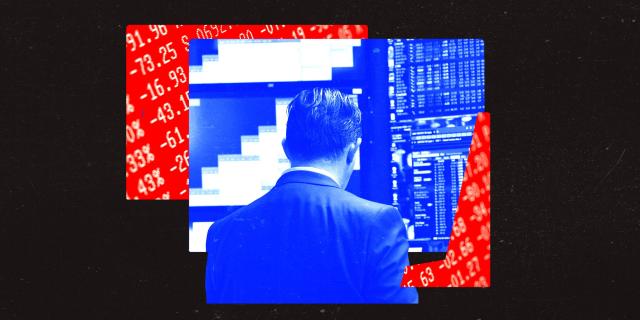
The stock market’s red-hot rally could sputter by the fall.
Bill Blain, the founder of Wind Shift Capital and a longtime strategist sees stocks tanking by 7%-12% by October.
The decline will be sparked by a trifecta of threats that’s been looming over the equity market for months, Blain said, suggesting that the run-up in stocks is approaching its upper-limit.
Signs of a impending correction are already in full-swing, Blain told Business Insider in an interview. Chip stocks tumbled this week after the Biden administration proposed tighter trade rules against China. The S&P 500 also struggled, with the benchmark index dropping 2% over the last trading week.
“All these things potentially configure a correction,” Blain said. “You can feel it in the market around you with a correction because, rather than tumbling off a cliff, you roll down a slope.”
That pullback could be triggered by a number of things: escalating geopolitical tensions, inflation treading higher in the economy, or an unpredictable Black Swan event. But the risks are so prevalent, a pullback will likely come by October this year, Blain predicted.
He’s steering clear of Big Tech stocks, and for now he’s only bullish on “dull, boring, and predictable” names. Blain added that he’s been scooping up gold and other commodities.
“I’m looking at fundamentals,” Blain added. “In times of crisis, there are always opportunities.”
A Bermuda Triangle in stocks
While stocks have broken through a series of record-highs this year, a potent mix of headwinds has been building all along, Blain said.
For one, stocks are overvalued, with valuations pushed to atmospheric levels by the frenzy for generative AI. Hype for AI stocks has led investors to pour billions into the sector over the past year, but the trend is eerily reminiscent to the early 2000s, Blain said, when the craze for internet stocks blew up and sent the Nasdaq Composite tumbling 78% peak-to-trough.
Tech stocks now account for highest portion of the S&P 500 since the early 2000s, according to an analysis from Société Générale. By one metric, stocks look to be the most expensive since 1929, when investor exuberance peaked and led stocks into a steep crash, elite investor John Hussman said recently.
“I’ve watched Big Tech for 40 years and watched successive things come through,” Blain said, pointing to other failed tech fads, like the metaverse. “Ultimately, everyone piles into them thinking, yeah, this is the new thing that we are going to massively, massively rich on, but they all under-deliver and overpromise.”
Another risk to stocks lies in interest rates, Blain said, as borrowing costs look poised to stay higher for longer.
Some forecasters remain optimistic that inflation will fall back to the Fed’s 2% target, leading central bankers to cut rates. But inflationary pressures still remain in the economy, Blain said, pointing to trends like deglobalization and supply chain disruptions.
Inflation will likely stay “stuck” around 3%, Blain predicted. That means rates will only come down marginally, with the Fed cutting rates one to two percentage points at most, he added.
“There is an awful lot of people in the financial markets who just don’t understand that zero interest rates and ultra-low interest rates are not normal,” Blain added. “I certainly see the possibility of a correction as the market starts to realize the interest rates are only going to go down by almost a cosmetic amount.”
The final risk Blain is eyeing is the upcoming presidential election, which contains a handful of uncertainties that could batter stocks, Blain said.
Several of Biden’s and Trump’s economic policies have the potential to stoke higher prices, such as Trump’s proposal to cut taxes, or Biden’s trade restrictions against China. Those policies have the potential to create “loads” of inflation and lower the number of jobs in the US, Blain said.
Both presidential candidates also look poised to add to the US debt balance, he added. Higher debt levels can also stoke inflation and discourage foreign investors from buying up US Treasuries, which means less capital flowing into the economy.
“I think people are going to say, ‘We’ve got to start looking at risk-off trades.’ Not just in terms of momentary risk-off, but sort of a longer term strategy,” he added. “My own guess is we’re not going to have a market crash, but we are going to have a substantial correction.”
Blain is among a growing chorus of bearish forecasters on Wall Street, who think the excitement for AI and Fed rate cuts can only carry stocks so far.
Strategists at Morgan Stanley, Stifel, and Richard Bernstein Advisors are predicting a near-term pullback of some magnitude, with more extreme forecasters calling for a stock correction as steep as 70%.